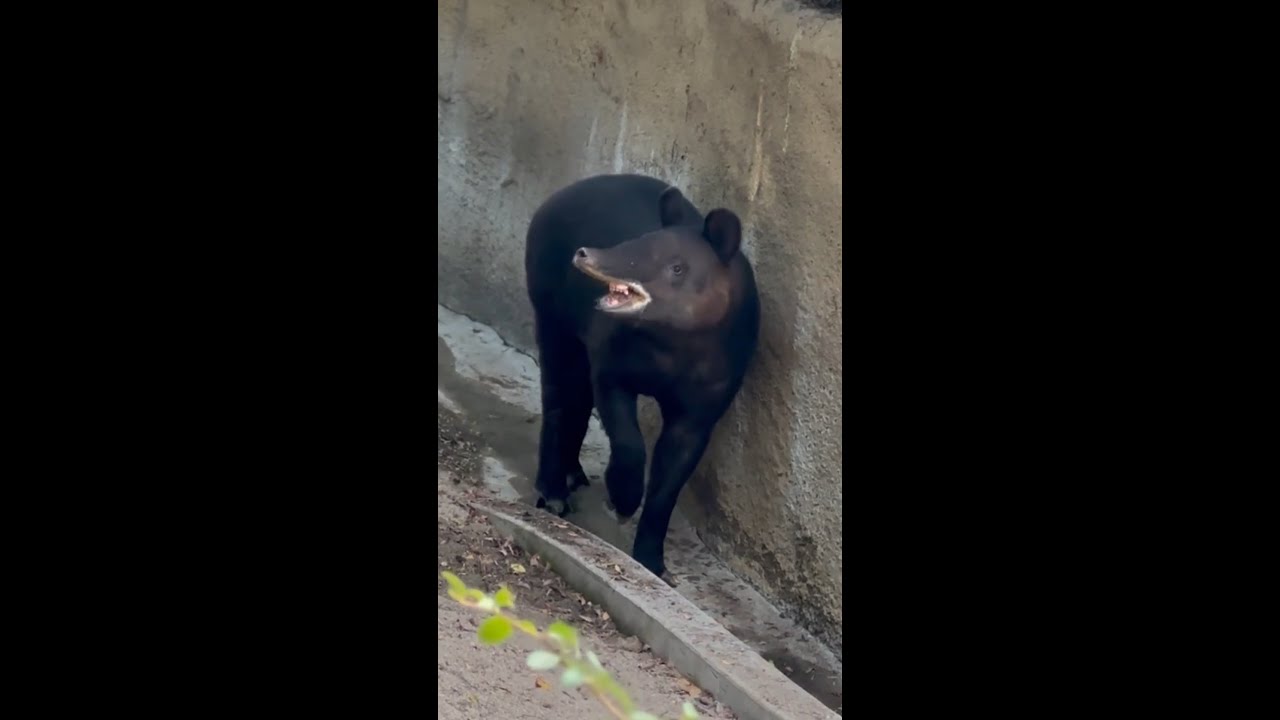– The significance of tapirs in ecosystems and their conservation status
– An overview of Smelly Goofy Mojito, a notable tapir, and its habitat
– The challenges facing tapirs and conservation strategies in place
– The role of zoos and wildlife parks in tapir conservation and education
– How the public can support tapir conservation efforts
Tapirs are an essential part of many ecosystems around the globe. Serving as seed dispersers, their feeding habits contribute to the health of forests and biodiversity. Despite their ecological importance, tapirs face threats from habitat destruction, hunting, and climate change. As a result, all four existing species of tapirs are currently listed on the IUCN Red List, with statuses ranging from Vulnerable to Endangered.
Within this context, Smelly Goofy Mojito the Tapir is a remarkable tapir conservation ambassador. Residing in a controlled environment that mimics his natural habitat as closely as possible, this particular tapir has become a focal point for educational programs to raise awareness about tapirs’ conservation and their natural environments.
Smelly Goofy Mojito’s habitat is a carefully constructed space that promotes his well-being while accommodating his biological and psychological needs. The space includes a variety of vegetation that is part of the tapir’s diet and water sources for bathing, which is a crucial part of tapir behavior. This environment supports Smelly Goofy Mojito’s health and provides a valuable educational tool for visitors, showcasing the tapir’s natural behaviors and the importance of preserving their habitats.
Despite efforts to protect them, tapirs face significant challenges. The destruction of tropical forests for agriculture, cattle ranching, and urban development leads to habitat fragmentation, reducing the area available for tapirs to live and isolating populations, making it harder for them to find mates. Illegal hunting poses another threat, with tapirs being targeted for their meat and hide. Climate change also affects tapir populations by altering their habitats and the distribution of their food sources.
In response to these challenges, various conservation strategies have been implemented. Protected areas have been established to conserve the tapir’s natural habitats. Conservation breeding programs, like the one Smelly Goofy Mojito is part of, aim to sustain healthy populations in captivity as a backup for dwindling wild populations. Additionally, organizations are working with local communities to develop sustainable land-use practices that benefit people and tapirs.
Zoos and wildlife parks play a crucial role in tapir conservation and education. Housing tapirs like Smelly Goofy Mojito allow visitors to learn about these animals and their challenges in the wild. Educational programs and interactive exhibits engage the public in tapir conservation, fostering a connection between visitors and these unique mammals. Moreover, many zoos participate in international breeding programs, helping to ensure the genetic diversity and long-term survival of tapir populations.
Public support is vital for the success of tapir conservation efforts. Individuals can help by supporting accredited zoos and conservation organizations, adopting sustainable lifestyle choices that reduce deforestation and habitat destruction, and raising awareness about tapirs and their plight. Furthermore, supporting policies that protect natural habitats and reduce climate change impacts is critical for preserving tapirs and the biodiversity of the ecosystems they inhabit.
Tapirs, including those like Smelly Goofy Mojito, play a pivotal role in their ecosystems and are an indicator of the health of their natural habitats. Preserving these animals and their habitats requires a multifaceted approach, combining habitat protection, research, educational outreach, and public engagement. Through concerted efforts, it is possible to safeguard the future of tapirs and the rich biodiversity of the tropical forests they call home.
*****
Source Description
What do you think Mojito, the mountain tapir, is smelling? 👃 Tapirs raise their long, wiggly nose to expose the Jacobson’s organ at the roof of their mouth to better inhale scents and pheromones. This is called a flehmen response, and it looks like this. 😛
#TapirTuesday #MountainTapir #Tapir


